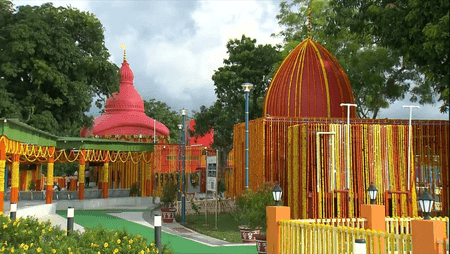
Historic and Spiritual Importance
The Mata Tripura Sundari Temple, built over 524 years ago by Maharaja Dhanya Manikya, stands as one of the 51 significant Shakti Peethas in India. With its distinct ‘Kurma Pitha’ or tortoise shell-like architecture, the temple enshrines the goddess Tripura Sundari and a smaller idol called ‘ChhotiMa’ or Goddess Chandi. It embodies deep religious significance and is a pivotal pilgrimage site in Northeast India.
Redevelopment Project Overview
In a landmark project under the central government’s PRASHAD scheme, the temple was extensively redeveloped with a total investment upwards of ₹34.43 crore. The newly constructed three-storied complex now includes:
- Ground floor spanning 6,784 square meters featuring lobbies, prayer halls, and 86 newly built shops catering to devotees and pilgrims.
- First-floor area of 2,317 square meters housing residential quarters for priests, monks, and volunteers ensuring smooth temple operations.
- Second-floor ‘Naatmandir’ or main temple area of 7,355 square meters with enhanced sanctity and capacity for larger congregations.
- Modern amenities including solar power installations, clean drinking water, ramp and lift facilities for differently-abled visitors, and updated electrical systems.
- Landscaped gardens and vertical plantations enhancing the temple’s serene environment.
Tourism and Economic Benefits
This redevelopment is instrumental in amplifying spiritual tourism, anticipated to increase visitor footfall significantly, fostering local employment and small business growth. The temple’s broader appeal is expected to invigorate Tripura’s tourism economy, making it a premier religious destination in the region.
Additionally, the government’s plan includes the creation of a ’51 Shakti Peethas Park,’ featuring replicas of all Shakti Peethas, further diversifying the pilgrimage experience in Tripura and boosting cultural tourism.
Vision for Heritage and Development
Prime Minister Modi’s inauguration resonates with the motto of ‘Vikas Bhi, Virasat Bhi’ (Development with Heritage). This initiative blends reverence for India’s spiritual legacy with the necessity for modern infrastructure, ensuring sustainable growth in pilgrimage-related activities.







